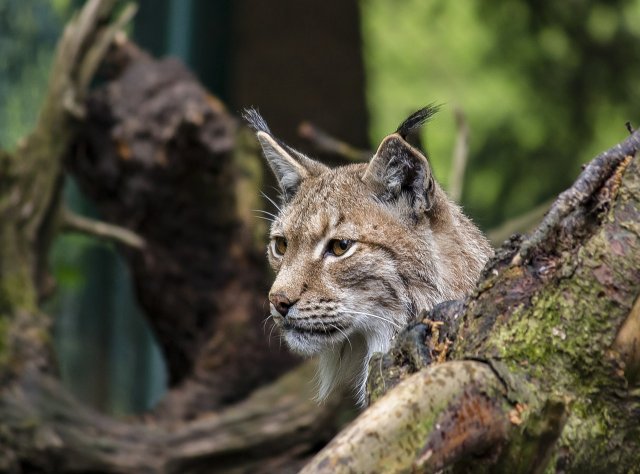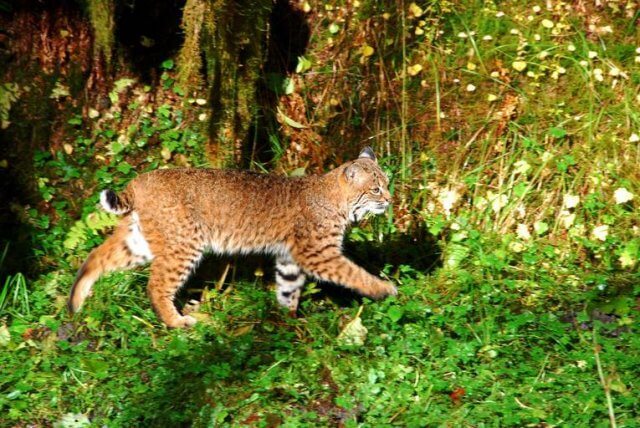The Top 5 Differences Between Canada Lynx and Bobcats
The Fierce Battle: Lynx And Bobcats – Unveiling Nature’s Untamed Rivals
When it comes to the world of wild cats, the Canada Lynx and the Bobcat are two species that often get confused due to their similar appearances. While they may share some similarities, there are several key differences that set them apart. In this article, we will explore the top 5 differences between Canada Lynx and Bobcats, shedding light on their distinct characteristics and behaviors.
1. Physical Appearance
One of the most noticeable differences between Canada Lynx and Bobcats lies in their physical appearance. The Canada Lynx is larger and has longer legs compared to the Bobcat. On average, a Canada Lynx measures around 80-100 centimeters in length, while a Bobcat measures around 65-105 centimeters. Additionally, the Canada Lynx has longer tufts of hair on its ears, giving it a more distinctive appearance.
Another key difference is their coat color. The Canada Lynx has a grayish-brown coat with black spots, while the Bobcat has a more variable coat color ranging from gray to reddish-brown with distinct black spots or stripes. These differences in physical appearance make it easier to distinguish between the two species.
2. Habitat
Lynx and Bobcats: The Canada Lynx and the Bobcat have different habitat preferences. The Canada Lynx is primarily found in boreal forests, which are characterized by dense evergreen trees and cold climates. They are well-adapted to snowy environments and have large, furry paws that act as snowshoes, allowing them to move easily in deep snow.
On the other hand, Bobcats are more adaptable and can be found in a variety of habitats, including forests, swamps, deserts, and even suburban areas. They are known for their ability to thrive in diverse environments, making them more widespread compared to the Canada Lynx.
3. Diet
While both the Canada Lynx and the Bobcat are carnivorous, their diets differ slightly. The Canada Lynx primarily feeds on snowshoe hares, which make up around 75-90% of their diet. They have a strong dependency on this prey species, and their population dynamics are closely linked to the abundance of snowshoe hares in their habitat.
On the other hand, Bobcats have a more varied diet. They are opportunistic hunters and will prey on a wide range of animals, including rabbits, rodents, birds, and even deer. Their ability to adapt their diet to the available prey in their habitat contributes to their success in different environments.
4. Behavior
Lynx and Bobcats: When it comes to behavior, the Canada Lynx and the Bobcat also exhibit some differences. The Canada Lynx is known for its solitary nature and tends to avoid interactions with other individuals, except during the breeding season. They have large home ranges and are highly territorial, marking their territories with scent markings.
On the other hand, Bobcats are more social and have overlapping home ranges. They are known to tolerate the presence of other Bobcats in their territory, especially females with dependent young. However, they still maintain their territories and use scent markings to communicate with other individuals.
5. Conservation Status
Lynx And Bobcats – Unveiling Nature’s Untamed Rivals
Both the Canada Lynx and the Bobcat face conservation challenges, but their statuses differ. The Canada Lynx is listed as a threatened species in the United States under the Endangered Species Act. Their populations have declined due to habitat loss, fragmentation, and climate change, which affects the availability of their primary prey, the snowshoe hare.
On the other hand, the Bobcat is more abundant and has a stable population. They are not currently listed as threatened or endangered, although they may face localized threats in certain regions. The adaptability of the Bobcat to different habitats and their ability to tolerate human presence has contributed to their relatively stable population.
Summary
Lynx and Bobcats: In conclusion, while the Canada Lynx and the Bobcat may share some similarities in appearance, they have distinct differences in physical appearance, habitat preferences, diet, behavior, and conservation status. Understanding these differences is crucial for accurately identifying and conserving these two fascinating wild cat species. By appreciating their unique characteristics, we can better appreciate the diversity and beauty of the natural world.
Read More About Bobcats From Wikipedia





